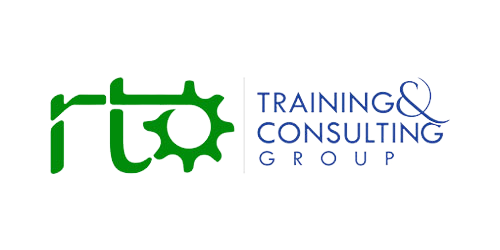In a modern automotive workshop at a regional training institute, James watches his students diagnose complex faults in hybrid vehicles. A master technician with two decades of industry experience, he made the leap to teaching three years ago. "Some days I wonder if I made the right choice," he admits quietly. "I took a substantial pay cut, the paperwork is relentless, and I'm constantly racing to keep up with both teaching requirements and industry changes. But then I see that moment when a concept clicks for a student, when they solve a problem independently, and I remember why I'm here."
James represents both the promise and the precarious reality of Australia's VET teaching workforce. His industry expertise is invaluable to developing job-ready graduates, yet the system struggles to attract and retain professionals like him in sufficient numbers to meet Australia's growing skills needs.
The situation has reached critical proportions. Three in five TAFE teachers are over 45 years old, almost double the average for the Australian workforce. With approximately 73,000 TAFE employees and an estimated 150,000 working for other VET providers across more than 4,000 Registered Training Organisations (RTOs), the sector faces a looming demographic cliff that threatens its capacity to deliver quality training at the scale Australia's economy demands.
"We're approaching a perfect storm," warns a veteran VET policy expert. "Just as industry needs more skilled graduates to navigate technological transformation, globalisation, and changing work structures, we're losing our most experienced educators to retirement while struggling to attract new talent from industry. Without decisive action, this teaching talent crisis will become a national skills crisis."
The Dual Professional Challenge: A Uniquely VET Problem
At the heart of the VET teacher shortage lies a distinctive challenge: the requirement for educators to be "dual professionals" who combine both current industry expertise and sophisticated pedagogical capabilities.
"This dual requirement creates specific barriers that don't exist in other educational contexts," explains a workforce development specialist. "Industry professionals must develop new identities and capabilities as educators while maintaining their technical currency. Meanwhile, those with educational backgrounds may lack the deep, current industry knowledge essential for credible vocational training."
The statistics highlight this challenge. Nine out of ten VET professionals outside TAFE do not hold formal teaching qualifications, raising serious questions about teaching quality and consistency. Yet imposing immediate qualification requirements would likely worsen shortages by deterring industry experts from making the transition.
For those who do make the leap, the identity shift can be jarring. "I went from being the confident expert everyone turned to for solutions to feeling like a complete novice at teaching," recalls a former construction manager now teaching building trades. "That loss of professional confidence is something many industry experts aren't prepared for when they enter teaching."
The Economic Reality: Competing with Industry Salaries
Perhaps the most straightforward barrier to attracting quality educators is the significant salary differential between teaching and industry roles, particularly in high-demand technical fields.
"When a qualified cybersecurity professional can earn $150,000+ in industry but would start at under $90,000 in teaching, the economic equation simply doesn't add up for many potential educators," notes a recruitment specialist who works with multiple training providers. "This gap is especially problematic for mid-career professionals with financial commitments and established lifestyle expectations."
The problem varies significantly across vocational fields, creating particular challenges in growth sectors like information technology, advanced manufacturing, renewable energy, and healthcare. These fields already face skills shortages, making both industry experts and qualified teachers extremely valuable commodities in a competitive labour market.
Some progressive providers are experimenting with market-responsive salary structures that include additional loadings for high-demand fields, but these remain the exception rather than the rule. Most public providers particularly struggle with rigid salary structures that fail to reflect market realities across different discipline areas.
Beyond Money: The Workload and Recognition Challenge
While salary matters, many VET educators cite workload pressures and lack of professional recognition as equally significant factors in their career decisions.
"The administrative burden is crushing," shares a hospitality trainer with previous experience managing high-end restaurants. "I spend more time documenting my teaching for compliance purposes than I do actually preparing quality learning experiences. It's demoralising and exhausting."
VET educators typically juggle multiple demands beyond classroom teaching, maintaining industry connections, developing and updating learning materials to reflect changing workplace practices, assessing complex practical competencies, managing compliance requirements, and supporting diverse learner needs. This workload complexity creates significant stress and burnout risk, particularly when not adequately recognised in workload models.
The situation is further complicated by the sector's increasing reliance on casual and part-time staff. Non-permanent teachers now make up the majority of VET educators, with many holding multiple jobs to make ends meet. This casualisation creates additional challenges for professional identity, team cohesion, and consistent quality.
"When you're rushing between multiple campuses as a casual teacher, with minimal paid preparation time and limited connection to the broader educational community, delivering quality education becomes extraordinarily difficult," explains an advocate for improved VET working conditions. "Yet this is exactly what we expect from an increasing proportion of our teaching workforce."
Regional Challenges: Where Geography Compounds the Problem
For regional and remote training providers, attracting and retaining quality educators involves additional layers of difficulty.
"We're not just competing with industry salaries; we're competing with metropolitan lifestyles," explains the human resources manager at a regional training organisation. "Potential educators consider factors like career opportunities for partners, educational options for children, healthcare access, and cultural amenities, all areas where regional communities may offer fewer options than major cities."
These challenges create particularly acute shortages in regional areas already struggling with skills gaps across multiple industries. The result is a troubling cycle where regional communities most in need of skilled workers face the greatest difficulties in securing the educators needed to develop that workforce locally.
Some regions are developing innovative responses, including subsidised housing for educators, relocation allowances, accelerated promotion opportunities, and partnerships with local industry to create attractive combined roles. These place-based solutions recognise that effective recruitment strategies must address both professional and personal considerations.
Innovative Pathways: Creating Multiple Routes into Teaching
Faced with these recruitment challenges, forward-thinking providers are developing more flexible pathways into VET teaching that recognise the diverse backgrounds of potential educators while maintaining quality standards.
"The traditional model of requiring full teaching qualifications before entry creates insurmountable barriers for many industry experts," notes a teaching quality specialist. "We need staged approaches that allow people to begin teaching with appropriate support while developing educational capabilities over time."
Promising innovations include part-time and concurrent employment models that enable industry professionals to begin teaching while maintaining their primary careers. These arrangements create low-risk entry points that allow exploration of teaching aptitude without requiring immediate career changes.
"I started teaching one day per week while maintaining my engineering position," explains a manufacturing educator. "This let me test whether I enjoyed teaching without sacrificing financial security. Over three years, I gradually increased my teaching load as I completed my educational qualifications and became more confident in the classroom."
Other providers have implemented structured mentoring programs that pair new educators with experienced mentors who provide practical guidance, emotional support, and assistance with navigating institutional systems. These relationships prove particularly valuable in helping industry experts translate their technical knowledge into effective learning experiences.
Industry-institution exchange programs represent another promising approach, creating temporary teaching opportunities for industry personnel while giving educators industry placement experiences. These exchanges build understanding in both directions while identifying industry professionals with teaching aptitude and interest.
"Our industry exchange program has become our most effective recruitment pipeline," shares a program director at a metropolitan training provider. "About 40% of the industry professionals who participate in short-term teaching placements express interest in more permanent teaching roles, and they enter with realistic expectations about what the job entails."
Professional Development: Growing the Teachers We Need
While recruitment strategies are essential, equal attention must be given to developing and retaining the educators already in the system. Effective professional development addresses both the pedagogical and industry currency aspects of the dual professional role.
"Quality professional development represents the most important retention factor for VET educators," emphasises a teaching and learning specialist with extensive experience across the sector. "When educators feel supported in maintaining both their teaching capabilities and industry currency, they're significantly more likely to remain in the profession despite other challenges."
Industry currency programs provide structured opportunities for educators to maintain and refresh their vocational expertise. These might include industry release time for direct workplace participation, collaborative industry projects addressing real business challenges, participation in professional conferences and industry events, or formal partnerships with employers that facilitate regular exposure to current practices.
"Our industry attachment program gives each teacher two weeks annually to work in their industry field," explains the professional development coordinator at a large multi-sector provider. "They return with updated knowledge, renewed confidence, strengthened industry connections, and fresh examples to share with students. It's our most highly valued professional development initiative."
Equally important is pedagogical capability development, addressing the educational aspects of the dual professional role. Beyond initial teaching qualifications, ongoing development might focus on technology-enhanced learning approaches, inclusive teaching practices for diverse learner groups, authentic assessment design, or specialised pedagogies appropriate for particular vocational contexts.
"Peer learning communities have proven particularly effective for pedagogical development," notes an educational researcher who studies effective VET teaching. "When educators can share challenges and innovations with colleagues facing similar teaching situations, they develop practical solutions while building the professional community that sustains their commitment to teaching."
Retention Through Career Evolution: Creating Growth Pathways
Retaining experienced educators requires recognition that their needs and aspirations evolve throughout their careers. Flexible pathways that accommodate different career stages and life circumstances have proven essential for maintaining engagement and preventing burnout.
"The traditional model where teaching is teaching is teaching until retirement simply doesn't work anymore," argues a career development specialist. "People want growth, new challenges, and varied contributions throughout their working lives. When we create multiple career pathways within VET, we retain talent that would otherwise leave for new opportunities."
Innovative providers are implementing diverse role configurations that accommodate changing needs and interests. Beyond traditional full-time teaching positions, these might include combined teaching/industry roles, specialised positions focused on assessment or curriculum development, mentoring or teacher development roles, applied research positions, or industry liaison functions.
"After fifteen years teaching aged care, I was ready for a change but didn't want to leave the sector entirely," shares a health educator. "My provider created a hybrid role where I spend half my time mentoring new teachers and developing curriculum resources. This fresh challenge has reinvigorated my commitment while allowing the organisation to leverage my experience in new ways."
For older educators approaching retirement, phased transition options help manage the gradual handover of responsibility while maintaining their contribution and facilitating knowledge transfer. These arrangements might include reduced teaching loads combined with mentoring responsibilities, curriculum documentation projects that capture specialised knowledge, or advisory roles that maintain connections between retiring educators and their departments.
Creating Supportive Work Environments: Culture Matters
Beyond formal programs and career pathways, the daily experience of working in VET profoundly influences retention decisions. Providers that create supportive, collaborative cultures typically maintain higher educator satisfaction and retention rates.
"We can have all the right programs on paper, but if the daily reality feels unsupportive or excessively bureaucratic, we'll still lose good people," cautions a leadership coach who works with VET managers. "The micro-interactions between leaders and educators, the way workload is allocated and recognised, the degree of professional autonomy granted, these factors collectively determine whether educators feel valued and motivated to stay."
Realistic workload models represent a fundamental aspect of supportive environments. Effective models recognise the full range of activities required for quality VET teaching and allocate time accordingly. They acknowledge the additional demands of teaching new programs, working with students requiring additional support, or implementing significant curriculum changes.
"When I moved from a provider with unrealistic workload expectations to one with a more reasonable approach, my teaching quality improved dramatically," reveals a business educator with experience across multiple institutions. "I had time to properly prepare, to give meaningful feedback on assessments, to stay current with industry developments. The salary was actually lower, but my job satisfaction and intention to stay are much higher."
Collaborative teaching teams provide both practical support and collegial satisfaction that enhance retention. These teams might share curriculum development responsibilities, create common assessment approaches, observe and provide feedback on each other's teaching, or jointly problem-solve student learning challenges.
"In my previous role, I felt isolated as the only person teaching in my specialty area," recounts an IT educator. "Now I'm part of a genuine teaching team where we collaborate on everything from assessment design to troubleshooting difficult concepts. That collegial support makes all the difference in my daily experience and commitment to staying."
Systemic Solutions: Beyond Individual Providers
While individual providers can implement many retention strategies independently, addressing the VET educator workforce challenge comprehensively requires systemic approaches involving policymakers, funding bodies, industry partners, and educational institutions working collaboratively.
Supportive policy and funding frameworks create essential foundations for educator workforce development. Key elements include qualification frameworks that balance quality standards with accessible entry paths, funding models that explicitly support educator professional development and industry currency maintenance, and quality frameworks that recognise teaching capability as fundamental to educational outcomes.
"Our current funding models focus almost exclusively on student contact hours," notes a policy specialist. "This creates perverse incentives to minimise investment in teacher development, preparation time, and industry engagement, exactly the elements that determine teaching quality. We need funding approaches that explicitly value and support educator development."
Active industry participation beyond traditional advisory roles is equally essential. Promising approaches include joint appointments where industry experts teach part-time while maintaining industry roles, with costs shared between educational institutions and employers; industry-funded teaching positions in critical skill areas; and equipment and facilities partnerships that provide educators access to current industry technology.
"Forward-thinking industries recognise that investing in VET teaching capability directly serves their long-term workforce needs," explains an industry association leader. "Rather than simply complaining about skills shortages, they're partnering with training providers to develop and support the educators who will prepare their future workforce."
The National Imperative: Why This Crisis Demands Attention
The stakes in addressing the VET teaching talent crisis extend far beyond the education sector itself. With around 44% of new jobs expected over the next decade requiring VET as the primary training pathway, the sector's ability to attract and retain quality teachers directly impacts Australia's economic prosperity, industry innovation, and social inclusion.
"This isn't just an education issue, it's a national economic priority," emphasises an economist specialising in workforce development. "Without sufficient quality educators, we simply cannot develop the skilled workforce needed for Australia's future prosperity. Every industry transformation, from energy transition to digital adoption, depends on having vocational educators who can prepare workers with relevant, cutting-edge capabilities."
The social implications are equally significant. VET represents a crucial pathway to employment and economic mobility for many Australians, including those from disadvantaged backgrounds, regional communities, and individuals seeking career transitions. When teaching quality suffers due to workforce shortages, these opportunity pathways narrow, potentially exacerbating existing social and economic disparities.
"At its core, this challenge reflects how we value the development of practical skills in our society," reflects a veteran VET leader. "If we truly believe in the importance of vocational education, in the critical role of plumbers, healthcare workers, IT technicians, and countless other skilled professionals, then we must properly value and support those who develop these capabilities in others."
Building the Future: A Call to Action
Addressing the VET educator workforce challenge requires coordinated action across multiple fronts. Industry must recognise its stake in developing teaching talent and contribute more directly to solutions. The government must evolve funding and regulatory frameworks to better support educator recruitment and development. Educational institutions must create more supportive cultures and sustainable career pathways. And society must accord greater recognition to the vital contribution VET educators make to economic prosperity and individual opportunity.
The most promising approaches combine immediate practical steps with longer-term strategic initiatives. Immediate priorities include developing more flexible entry pathways for industry experts, implementing market-responsive compensation approaches for high-demand fields, reducing administrative burdens that distract from core teaching functions, and establishing comprehensive induction and mentoring programs for new educators.
Longer-term initiatives might include structured career development frameworks that span industry and education, qualification pathways that integrate rather than separate vocational and educational expertise, research programs that enhance understanding of effective vocational pedagogy, and public recognition systems that celebrate teaching excellence in vocational contexts.
"We need to recognise VET educators as the critical infrastructure they truly are,as essential to skills development as any building, equipment, or curriculum," urges a passionate advocate for the sector. "When we make this perspective shift, we establish the foundation for more effective approaches to recruitment, development, and retention."
Back in that automotive workshop, James watches his students apply theoretical knowledge to practical problems. Despite the challenges, he remains committed to developing the next generation of skilled technicians. "On my best days, I know I'm making a bigger difference here than I ever could working on vehicles myself," he reflects. "I'm not just fixing cars, I'm helping build people who will shape an entire industry."
His story embodies both the challenge and the opportunity facing Australia's VET sector. By valuing educators like James, by investing in their recruitment, development, and retention, we invest not just in educational quality but in the skilled workforce that will drive Australia's future prosperity. In a very real sense, the future of work depends on the future of those who teach it.


































